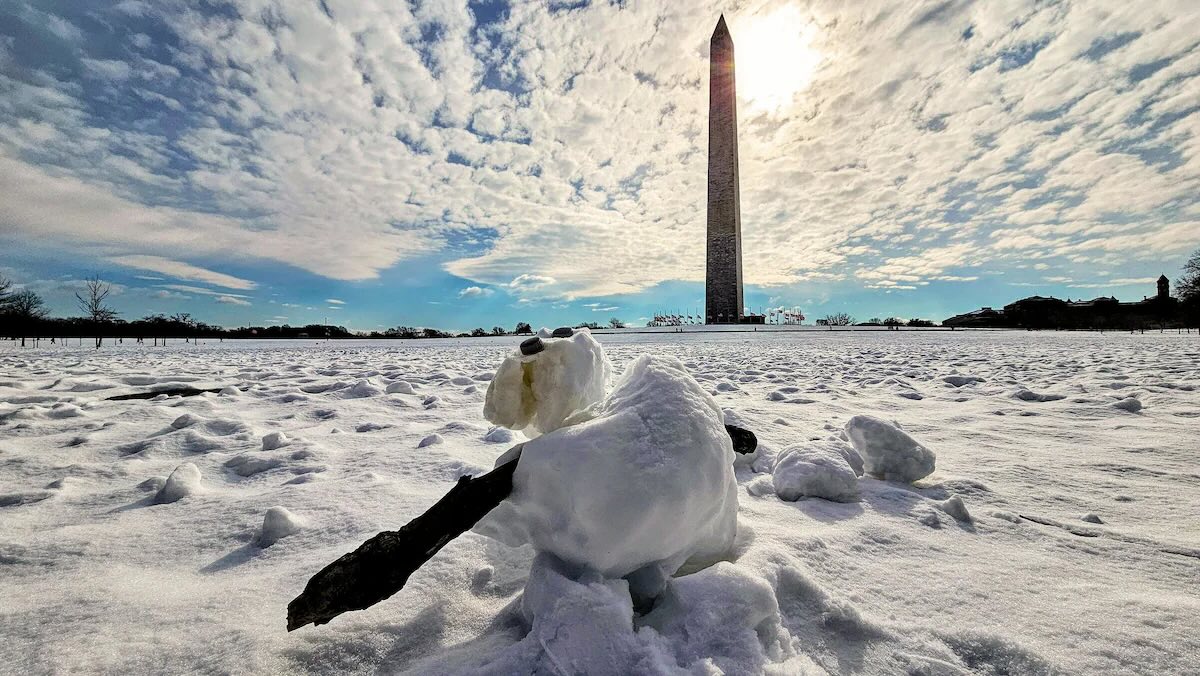
Washington, D.C. weather can be quite the rollercoaster. Did you know that the city experiences all four seasons distinctly? Summers can be hot and humid, while winters often bring chilly temperatures and occasional snow. Spring and fall offer mild, pleasant conditions, perfect for exploring the nation's capital. On average, D.C. gets about 40 inches of rain each year, making it a relatively wet city. Thunderstorms are common in the summer, sometimes leading to flash floods. Interestingly, the city’s location along the Potomac River influences its weather patterns significantly. Ever wondered why cherry blossoms bloom so beautifully in D.C.? The mild spring weather creates ideal conditions for these iconic flowers. Whether you’re planning a visit or just curious, understanding D.C.'s weather can help you make the most of your time in this historic city.
Washington, D.C.'s Unique Climate
Washington, D.C. is known for its rich history and iconic landmarks, but its weather is equally fascinating. The city experiences a variety of weather patterns throughout the year, making it a place of climatic contrasts.
-
Four Distinct Seasons: Washington, D.C. enjoys all four seasons. Winters can be cold with occasional snow, while summers are hot and humid. Spring and fall offer mild and pleasant weather, perfect for exploring the city's outdoor attractions.
-
Cherry Blossoms in Spring: Every spring, the city transforms into a pink paradise with the blooming of cherry blossoms. This event draws thousands of visitors and is a significant cultural celebration.
Winter Weather in D.C.
Winter in Washington, D.C. can be quite a spectacle. From snow-covered monuments to chilly winds, the season brings its own set of unique weather phenomena.
-
Snowfall Variability: Snowfall in D.C. can be unpredictable. Some winters see heavy snowstorms, while others might have just a light dusting. The city averages about 15 inches of snow per year.
-
Occasional Nor'easters: Nor'easters are powerful storms that can bring heavy snow, strong winds, and coastal flooding. D.C. occasionally experiences these storms, which can disrupt daily life.
Summer Heat and Humidity
Summers in Washington, D.C. are known for their heat and humidity. The city can feel like a sauna during the peak summer months.
-
High Temperatures: Summer temperatures often soar into the 90s (Fahrenheit). Heatwaves are common, and the city has measures in place to help residents stay cool.
-
Humidity Levels: The humidity in D.C. can be oppressive. High humidity levels make the air feel even hotter, leading to sticky and uncomfortable conditions.
Rainfall and Storms
Rainfall is a regular feature of Washington, D.C.'s weather. The city experiences a fair amount of precipitation throughout the year.
-
Annual Rainfall: D.C. receives about 40 inches of rain annually. Rainfall is fairly evenly distributed throughout the year, with May and June being the wettest months.
-
Thunderstorms: Thunderstorms are common in the summer. These storms can bring heavy rain, lightning, and occasionally hail. They often occur in the late afternoon or evening.
Unique Weather Events
Washington, D.C. has experienced some unique and memorable weather events over the years. These events have left a mark on the city's history.
-
The Knickerbocker Storm: In January 1922, a massive snowstorm known as the Knickerbocker Storm dumped over 28 inches of snow on the city. The weight of the snow caused the roof of the Knickerbocker Theatre to collapse, resulting in tragic loss of life.
-
Hurricane Isabel: In September 2003, Hurricane Isabel brought heavy rain and strong winds to D.C. The storm caused significant flooding and power outages, highlighting the city's vulnerability to tropical systems.
Final Thoughts on DC Weather
DC weather is a mixed bag. Summers can be hot and humid, while winters bring chilly winds and occasional snow. Spring and fall offer a pleasant respite with mild temperatures and beautiful foliage. The city’s location on the East Coast means it’s susceptible to hurricanes and nor’easters, adding some unpredictability to the mix.
Understanding these patterns helps residents and visitors prepare for whatever Mother Nature throws their way. Whether you’re planning a trip to the National Mall or just trying to figure out what to wear, knowing these weather facts can make your time in DC more enjoyable.
So next time you’re in the nation’s capital, keep an eye on the forecast, pack accordingly, and enjoy all the city has to offer, rain or shine.
Was this page helpful?
Our commitment to delivering trustworthy and engaging content is at the heart of what we do. Each fact on our site is contributed by real users like you, bringing a wealth of diverse insights and information. To ensure the highest standards of accuracy and reliability, our dedicated editors meticulously review each submission. This process guarantees that the facts we share are not only fascinating but also credible. Trust in our commitment to quality and authenticity as you explore and learn with us.
